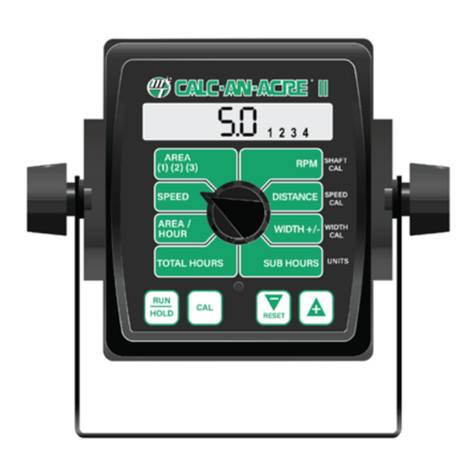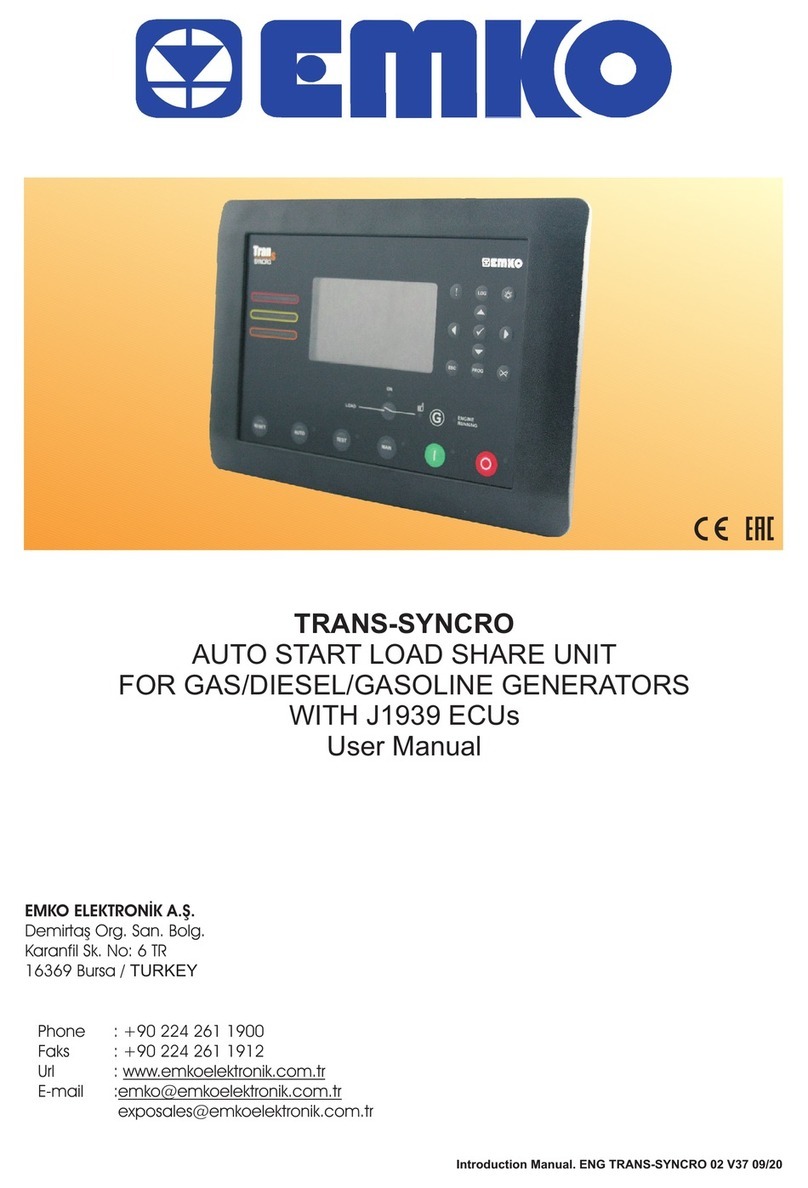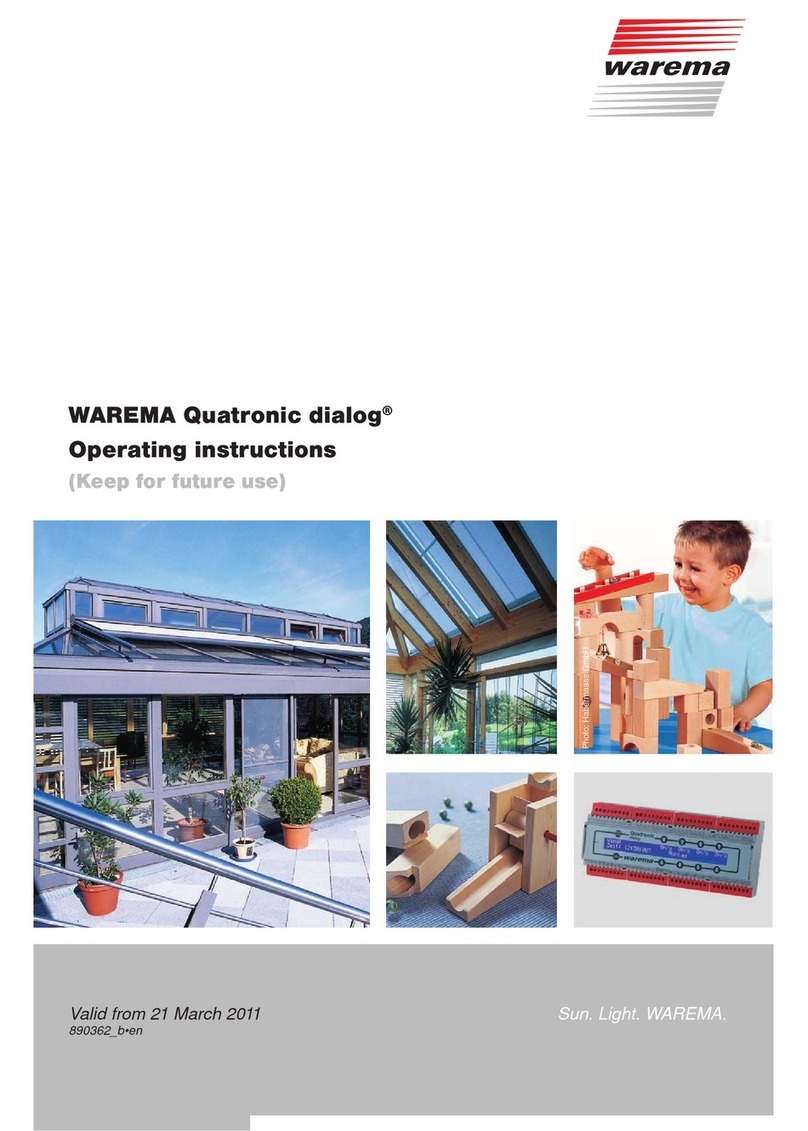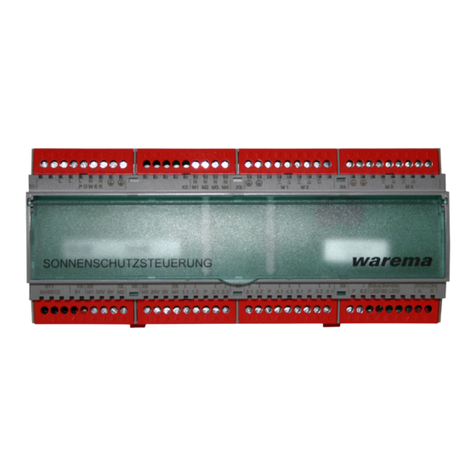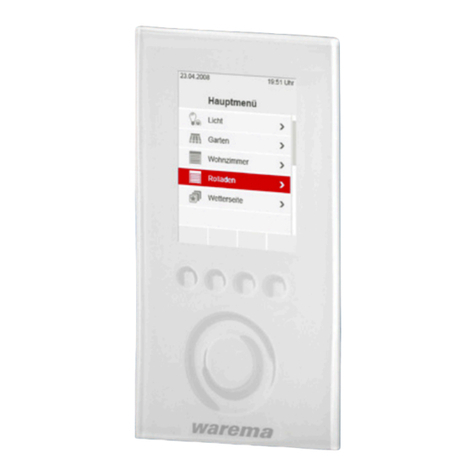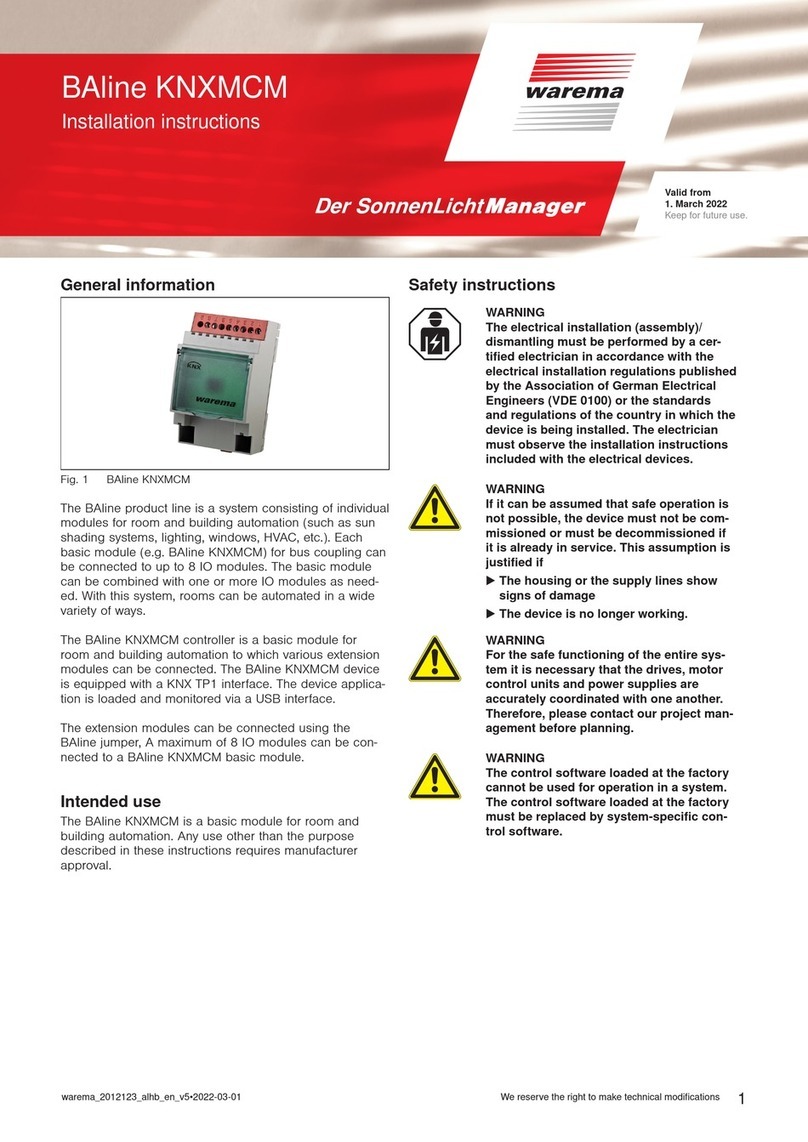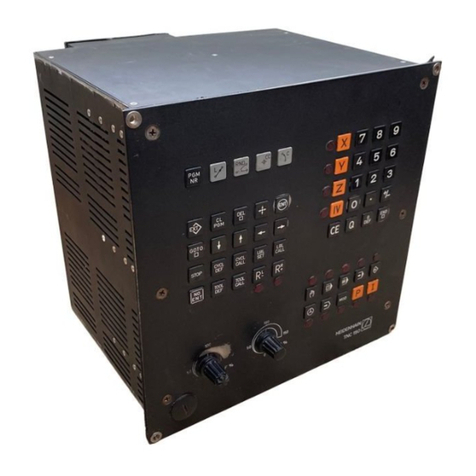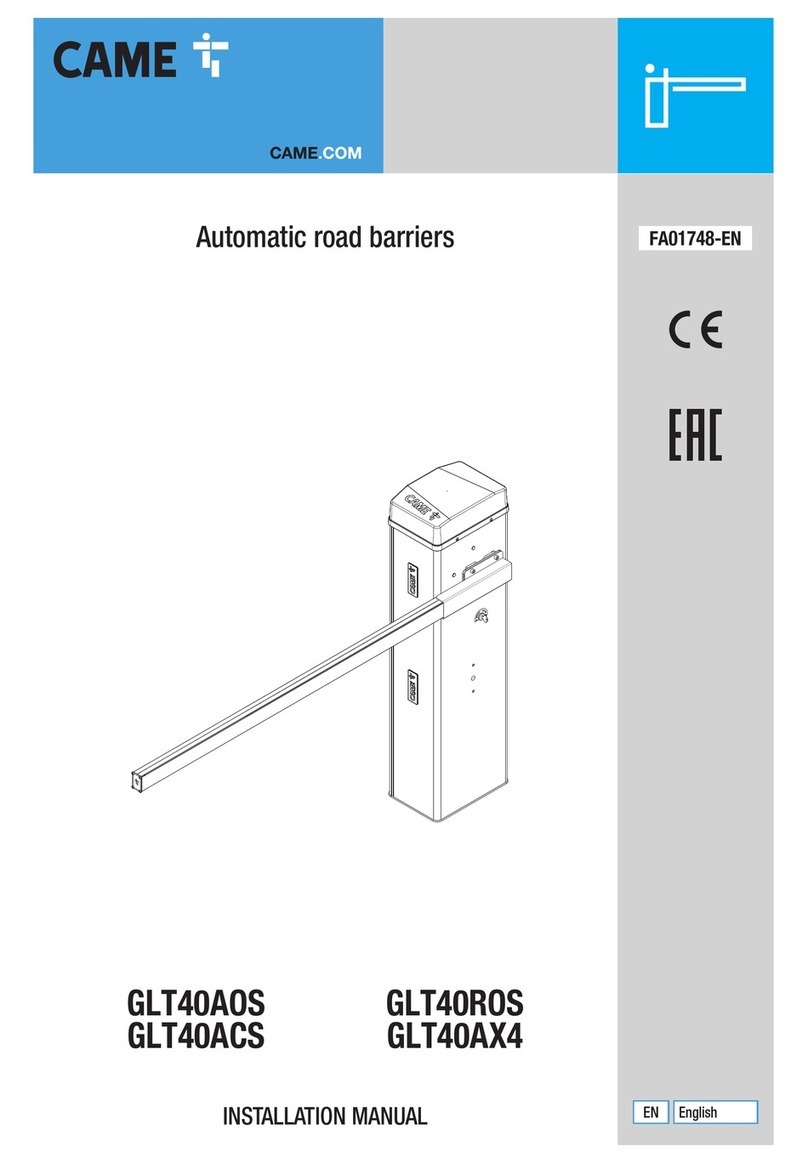
890557_d•en•01.07.2014 We reserve the right to carry out improvements 5
Contents
7.2.5.3 Break duration hh:mm.......................................................................... 65
7.2.5.4 Ventilation step....................................................................................... 65
7.2.5.5 Active during leave?.............................................................................. 65
7.2.5.6 Active during absence?........................................................................ 65
7.2.6 Time switch ................................................................................................... 66
7.2.6.1 Time switch ON/OFF ............................................................................ 67
7.2.6.2 ST1: switch time hh:mm....................................................................... 68
7.2.6.3 ST1: position........................................................................................... 68
7.2.6.4 ST1: Slat angle....................................................................................... 68
7.2.6.5 ST1: Auto control................................................................................... 68
7.2.6.6 ST2: switch time hh:mm....................................................................... 69
7.2.6.7 ST2: position........................................................................................... 69
7.2.6.8 ST2: Slat angle....................................................................................... 69
7.2.6.9 ST2: Auto control................................................................................... 69
7.2.6.10 ST3 and ST4 .......................................................................................... 70
7.2.6.11 Automatic status .................................................................................... 70
7.2.6.12 Auto control status ................................................................................ 70
7.2.6.13 Active during leave?.............................................................................. 70
7.2.6.14 Active during absence?........................................................................ 70
7.2.7 Cold protection............................................................................................. 71
7.2.7.1 Cold protection ON/OFF...................................................................... 71
7.2.7.2 Blocking temperature ........................................................................... 71
7.2.7.3 Position COLD........................................................................................ 71
7.2.8 Leave.............................................................................................................. 72
7.2.8.1 Position.................................................................................................... 72
7.2.8.2 Slat angle ................................................................................................ 72
7.2.9 Absent............................................................................................................ 73
7.2.9.1 Position................................................................................................... 73
7.2.9.2 Slat angle ................................................................................................ 73
7.2.9.3 Current state absent ............................................................................. 73
7.2.10 Manual operation......................................................................................... 74
7.2.10.1 Position DOWN ...................................................................................... 74
7.2.10.2 Slat angle DOWN .................................................................................. 74
7.2.10.3 Holding time hh:mm.............................................................................. 75
7.2.10.4 The manual operation options ............................................................ 75
7.2.11 Hand-held transmitter allocation............................................................... 76
7.2.11.1 Hand-held transmitter 1........................................................................ 77
7.2.11.2 Hand-held transmitter 2,3,4................................................................. 77
7.2.11.3 Hand-held transmitter identifier........................................................... 77
7.3 Manage channels, groups, scenes ................................................................ 78
7.3.1 Manage groups............................................................................................ 78
7.3.2 Manage scenes............................................................................................ 79
7.3.2.1 Scene selection ..................................................................................... 80
7.3.2.2 Change scene name ............................................................................ 80
7.3.2.3 Hand-held transmitter allocation......................................................... 81
7.3.2.4 Delete scene .......................................................................................... 81
7.3.2.5 Holding time hh:mm.............................................................................. 81
7.3.2.6 Scene member 1................................................................................... 81
7.3.2.7 Scene member 2 to 4 .......................................................................... 81
7.3.3 Sort channels, groups, scenes ................................................................. 82
7.3.4 Change alias names ................................................................................... 82
7.4 Leave time........................................................................................................... 84
7.4.1 Leave begin dd.mm .................................................................................... 84
7.4.2 Leave end dd.mm........................................................................................ 84
7.5 System settings .................................................................................................. 85
7.5.1 Date / time.................................................................................................... 86
7.5.2 Display ........................................................................................................... 87
7.5.2.1 Brightness at standby .......................................................................... 87
7.5.2.2 Brightness at operation ....................................................................... 87
7.5.2.3 Button tone ............................................................................................. 88
7.5.2.4 Standbyduration..................................................................................... 88
7.5.2.5 Display behaviour of Wisotronic ......................................................... 88



